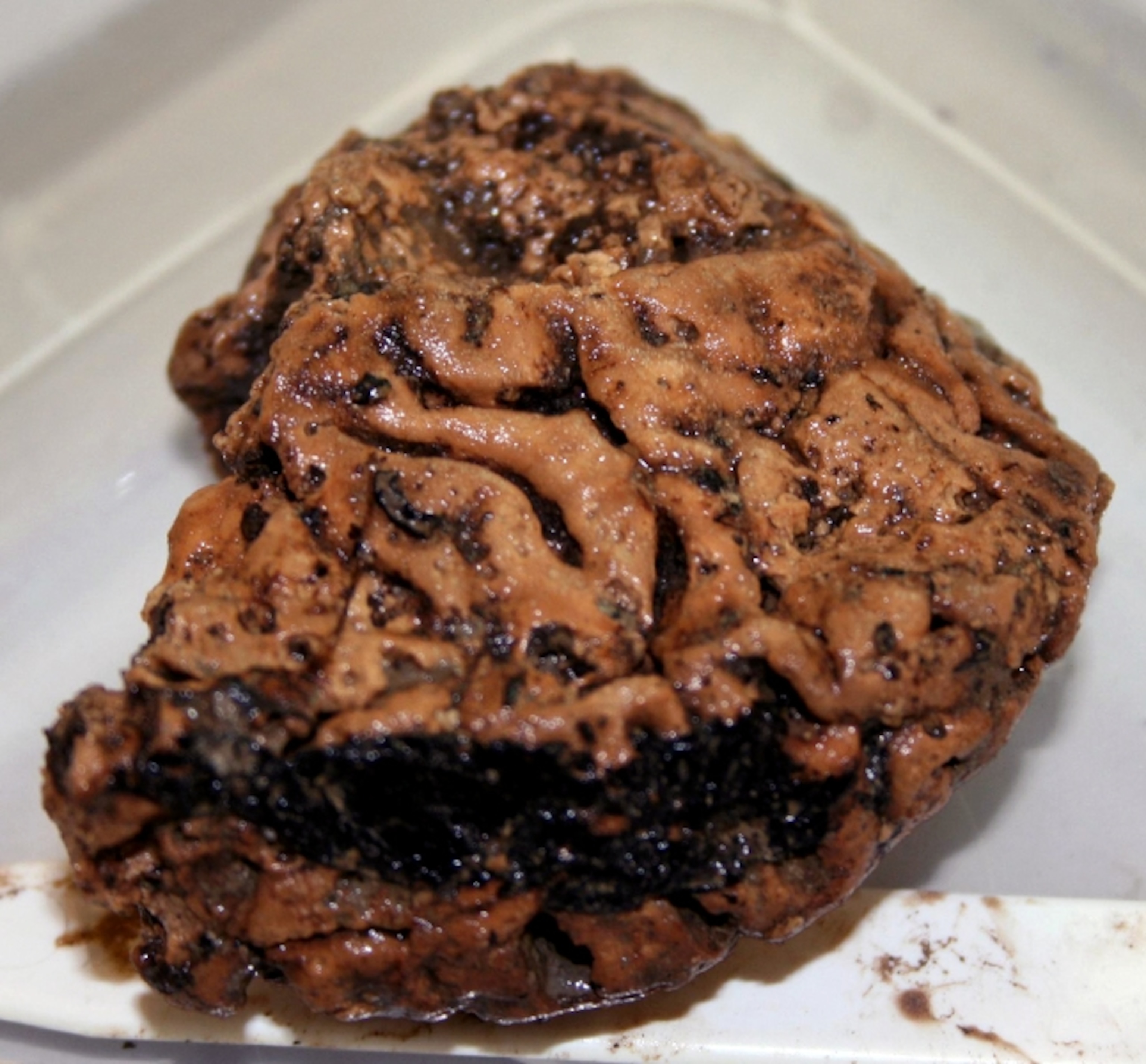
Ancient "Pickled" Brain Mystery Explained?
For one, decapitated head's quick burial may have aided preservation, study says.
Scientists may have partially cracked how Britain's oldest known human brain was "pickled" in mud for some 2,500 years.
First dug up by archaeologists in York, England (see map), in 2008, the well-preserved chunk of ancient gray matter prompted experts to investigate how the brain had stayed in such good shape. (See more pictures of the brain.)
Results of a new study found no chemical signs of deliberate preservation, either by embalming or smoking.
Instead, the team suggests that the brain was quickly buried in a pit full of thick, wet clay—among several factors that may have helped prevent the organ from decomposing.
(See "Oldest Fossil Brain Found in 'Bizarre' Prehistoric Fish.")
Protein analysis also confirms the ancient brain—dated to between 673 and 482 B.C.—belonged to a human, said study co-author Matthew Collins, an archaeologist at the University of York.
"The majority of the mass of the brain is still there, but it's quite reduced in volume—it's lost a lot of water."
Iron Age Man Hanged, Then Decapitated
Analyses of the brain and remains of the surrounding skull suggest the Iron Age brain belonged to a male between 26 and 45 who was hanged and then ritually decapitated. The rest of the man's body hasn't been located.
Gruesome neck-vertebra fractures and cut marks show the man was hanged and his head was sliced off after death with a knife or other sharp instrument, scientists say.
The presumably fatal neck injury "is sometimes referred to as a hangman's fracture, and it is consistent with a long-drop hanging," said study co-author Jo Buckberry, an archaeologist at the University of Bradford.
"On the same vertebra there are a series of nine small incisions made by a bladed instrument, which are consistent with a careful decapitation," Buckberry said.
(See "51 Headless Vikings in English Execution Pit Confirmed.")
"My feeling is the individual would have died from the fracture and the head was removed and deposited in the pit."
Lack of Bacteria, Body Boosted Preservation
The fact that the skull was found with intact jaw and neck bones shows the head was buried fresh.
"If you moved the skull at a later date, the soft tissue would have decayed"—resulting in the jaw and vertebrae coming detached, said Buckberry, whose study appeared in March in the Journal of Archaeological Science.
In addition to the rapid burial, the cool, low-oxygen conditions of the soil may have aided the brain's preservation, the team found. (See brain pictures.)
Cooler temperatures would have slowed the rate at which enzymes degraded the brain tissue, while a lack of oxygen in the soil would have reduced microbial action, the University of York's Collins noted.
The fact that the head was missing its body may have also kept the brain intact.
"Humans that have been buried tend to be eaten from the inside out," Collins said. "Once you've died, the gut bacteria are still pretty hungry."
These bacteria flood the corpse via blood from the alimentary tract—the digestive pathway through the body—and consume surrounding tissue.
"In this case, the blood will have drained from the severed head, and you've no longer got a connection with the alimentary tract."
Ancient Brain's Survival Still a Mystery
Still, these theories don't fully explain why the brain "didn't turn into mush," Collins said.
(Read "Beyond the Brain" in National Geographic magazine.)
"It's curious, because normally it is one of those organs that degrade quickly," he said. "There must be something going on internally that we don't understand."
To further investigate the phenomenon, researchers have buried pigs' heads in and around the pre-Roman site, to simulate what may have happened.





